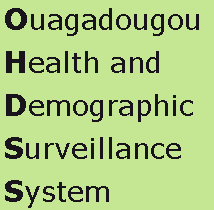The Ouagadougou Health and Demographic Surveillance System – OUAGA HDSS
Scientific articles
- Streatfield P. Kim, Khan Wasif A., Bhuiya Abbas, Hanifi Syed M.A., Alam Nurul, Millogo Ourohire, Sie Ali, Zabre Pascal, Rossier Clementine, Soura Abdramane et al (2014), "HIV/AIDS-related mortality in Africa and Asia: evidence from INDEPTH health and demographic surveillance system sites”, Global Health Action, 7: 25370 - http://dx.doi.org/10.3402/gha.v7.25370.
Keywords: Keywords: child health, water, sanitation, city, child fever, environment, neighbourhood, Ouagadougou, sub-Saharan Africa, urban Africa, hygiene
Using data on 825 under-5 children from the Ouagadougou Health and Demographic Surveillance System collected in 2010, this article examines the effects of aspects of the immediate environment on childhood fever. Logit regression models were estimated to assess the effects of the quality of the local environment on the probability that a child is reported to have had a fever in the two weeks preceding the survey, after controlling for various demographic and socioeconomic variables. While the estimated impact of some environmental factors persisted in the full models, the effects of variables such as access to water and type of household waste management decreased in the presence of demographic, socioeconomic and neighbourhood factors. The management of waste water was found to significantly affect the occurrence of childhood fever. Overall, the results of the study call for more efforts to promote access to tap water to households at prices that are affordable for the local population, where the threats to child health appears to be greatest. http://dx.doi.org/10.1017/S0021932014000479 Keywords: Keywords: Hypertension; Prevalence; Risk factors; Adult population; Rural-to-urban migrants; Ouagadougou
Background : Countries of sub-Saharan Africa are increasingly confronted with hypertension and urbanization is considered to favor its emergence. This study aims to assess the difference in the prevalence of hypertension between formal and informal urban areas of Ouagadougou and to determine the risk factors associated with hypertension in these urban populations of sub-Saharan Africa. Methods : A cross-sectional survey was conducted in 2010 on 2041 adults aged 18 years and older in formal and informal areas of Ouagadougou. Data was collected through personal interviews conducted at home. Blood pressure and anthropometric measurements were taken by trained interviewers. Logistic regressions were fitted to identify factors associated with hypertension. Results : The overall prevalence of hypertension was 18.6% (95% confidence interval [CI], 16.9-20.3) and its detection was 27.4% (95% CI, 22.9-31.9). Prevalence of hypertension in formal settings was 21.4% (95% CI, 19.0-23.8), significantly higher than prevalence in informal settings: 15.3% (95% CI, 13.0-17.6). However, this difference disappeared after adjusting for age. In addition to age, being an unmarried woman (odds ratio [OR] = 1.7; 95% CI, 1.1-2.4), recent rural-to-urban migration (OR = 1.8; 95% CI, 1.2-2.8), obesity (OR = 1.8; 95% CI, 1.1-3.1) and physical inactivity (OR = 1.9; 95% CI, 1.2-3.0), were independent risk factors for hypertension. Conclusions : Hypertension is common among the adult population of Ouagadougou but its detection is low. While there are no differences between formal and informal areas of the city, rural-to-urban migration emerges as an independent risk factor. Known risk factors as obesity and physical inactivity are confirmed while the vulnerability of unmarried women and rural-to-urban migrants maybe specific to this west African population. http://dx.doi.org/10.1186/1471-2458-14-893 Keywords: Keywords: Indigents, community targeting, health fees exemption, urban areas, Burkina Faso
Background : In most African countries, indigents treated at public health centres are supposed to be exempted from user fees. In Africa, most of the available knowledge has to do with targeting processes in rural areas, and little is known about how to select the worst-off in an urban area. In rural communities of Burkina Faso, trials of participatory community-based selection of indigents have been effective. However, the process for selecting indigents in urban areas is not yet clear. Methods : This study evaluates a community-funded participatory indigent selection process in both a formal (loti) and an informal (non-loti) neighbourhood in the urban setting of Burkina Faso’s capital. This was an exploratory study to evaluate the processes and effectiveness of participatory targeting. We conducted individual interviews (n = 26) and analyzed secondary qualitative data (eight focus groups, 16 individual interviews). We also used the results of a socioeconomic survey (carried out by the Ouaga HDSS in 2011) of all the households established in the areas, including those of selected indigents. Results : The coverage of indigent targeting was very low: 0.33% (loti) and 0.22% (non loti). In the non loti neighbourhood, the level of poverty among people selected was higher than the mean level of the poor who were not selected. Some indigents selected in the loti neighbourhood were not among the worst-off. The process was difficult to organize in the loti neighbourhood; people knew each other less well and were not very available, and there were cases of collusion. The process worked well in the non loti neighbourhood. Conclusions : This intervention research provides new evidence about the feasibility of a community-based selection process in an urban setting in Africa by comparing two different urban settings. The participatory community-based selection process appeared to be suitable for the non loti neighbourhood, but other targeting strategies need to be found for loti areas. Specific budgets need to be allocated to increase the coverage of indigent targeting. http://dx.doi.org/10.1186/1475-9276-13-31 Keywords: Keywords: milieu urbain, Afrique; soins prénataux; lieu d’accouchement; differences socioeconomiques
The expected growth in NCDs in cities is one of the most important health challenges of the coming decades in Sub-Saharan countries. This paper aims to fill the gap in our understanding of socio-economic differentials in NCD mortality and risk in low and middle income neighborhoods in urban Africa. We use data collected in the Ouagadougou Health and Demographic Surveillance System. 409 deaths were recorded between 2009-2011 among 20,836 individuals aged 35 years and older; verbal autopsies and the InterVA program were used to determine the probable cause of death. A random survey asked in 2011 1,039 adults aged 35 and over about tobacco use, heavy alcohol consumption, lack of physical activity and measured their weight, height, and blood pressure. These data reveal a high level of premature mortality due to NCDs in all neighborhoods: NCD mortality increases substantially by age 50. NCD mortality is greater in formal neighborhoods, while adult communicable disease mortality remains high, especially in informal neighborhoods. There is a high prevalence of risk factors for NCDs in the studied neighborhoods, with over one-fourth of the adults being overweight and over one-fourth having hypertension. Better-off residents are more prone to physical inactivity and excessive weight, while vulnerable populations such as widows/divorced individuals and migrants suffer more from higher blood pressure. Females have a significantly lower risk of being smokers or heavy drinkers, while they are more likely to be physically inactive or overweight, especially when married. Muslim individuals are less likely to be smokers or heavy drinkers, but have a higher blood pressure. Everything else being constant, individuals living in formal neighborhoods are more often overweight. The data presented make clear the pressing need to develop effective programs to reduce NCD risk across all types of neighborhoods in African cities, and suggest several entry points for community-based prevention programs. http://dx.doi.org/ 10.1371/journal.pone.0113780 Keywords: Keywords: urban; Africa; antenatal care; place of delivery; socioeconomic differences
Background: Maternal mortality is higher and skilled attendance at delivery is lower in the slums of Nairobi (Kenya) compared to Ouagadougou (Burkina Faso). Lower numbers of public health facilities, greater distance to facilities, and higher costs of maternal health services in Nairobi could explain these differences. Objective: By comparing the use of maternal health care services among women with similar characteristics in the two cities, we will produce a more nuanced picture of the contextual factors at play. Design: We use birth statistics collected between 2009 and 2011 in all households living in several poor neighborhoods followed by the Nairobi and the Ouagadougou Health and Demographic Surveillances Systems (n=3,346 and 4,239 births). We compare the socioeconomic characteristics associated with antenatal care (ANC) use and deliveries at health facilities, controlling for demographic variables. Results: ANC use is greater in Nairobi than in Ouagadougou for every category of women. In Ouagadougou, there are few differentials in having at least one ANC visit and in delivering at a health facility; however, differences are observed for completing all four ANC visits. In Nairobi, less-educated, poorer, non-Kikuyu women, and women living in the neighborhood farther from public health services have poorer ANC and deliver more often outside of a health facility. Conclusions: These results suggest that women are more aware of the importance of ANC utilization in Nairobi compared to Ouagadougou. The presence of numerous for-profit health facilities within slums in Nairobi may also help women have all four ANC visits, although the services received may be of substandard quality. In Ouagadougou, the lack of socioeconomic differentials in having at least one ANC visit and in delivering at a health facility suggests that these practices stem from the application of well-enforced maternal health regulations; however, these regulations do not cover the entire set of four ANC visits. http://dx.doi.org/10.3402/gha.v7.24351 Keywords: Keywords: natural methods; data collection bias ; Demographic and Health Survey; Burkina Faso; urban context
In developed countries, natural methods of contraception were widely used to space and limit childbirths until the late 1960s. In the first contraceptive surveys in France, researchers noticed that the use of natural methods was underreported, and added specific questions to correct for this bias. The Demographic and Health Surveys (DHS) do not currently ask questions specific to natural methods. We added such questions to the regular DHS question on current contraceptive use in a survey conducted in 2010 among 758 women ages 15 to 49 in the Health and Demographic Surveillance System of Ouagadougou (Ouaga HDSS), Burkina Faso. We found a notable increase in the proportion of women in union who report using contraception: 58.1% compared to 37.6% in the 2010 DHS for Ouagadougou. A similar proportion of women use modern medical methods or condoms in both surveys (32.0% and 32.2%, respectively), but natural method use is much greater in the 2010 Ouaga HDSS survey (26.1%) compared to the 2010 DHS for Ouagadougou (5.1%). Many women classified as having an unmet need for family planning in Ouagadougou by the DHS data are in fact natural method users. Additional questions to more completely measure natural method use should be tested in different settings. http://dx.doi.org/10.1363/4008714 Keywords:Keywords: contraception; espacement; abstinence postpartum; amenorrhée lactationnelle; planning familial moderne; Burkina Faso; milieu urbain
CONTEXT: In many low-income countries, women typically start contraception after the resumption of sexual intercourse postpartum or the return of menstruation. In Sub-Saharan Africa, traditional practices of postpartum breastfeeding and abstinence delay these events. In this study, we investigate motivations to rely on traditional practices and difficulties in starting a contraceptive method after a birth in urban West Africa.
METHODS: In 2012, we performed observations in seven health facilities in Ouagadougou, Burkina Faso, and conducted semi-structured interviews with 45 individuals (33 women and 12 men) with infants younger than 24 months. We describe existing postpartum family planning services, and women’s transition from traditional practices to a family planning method.
RESULTS: Family planning is delivered at the 6th week postpartum check-up, at which attendance is low. No women in the sample viewed amenorrhea as protective against pregnancy and all planned to start a family planning method just before or when they resume sexual activity. Half of the women abstained for six month or more and some did not transition safely from abstinence to a family planning method. The main difficulties encountered are provider barriers to the delivery of contraception to amenorrheic women and husbands’ refusals to refrain from unprotected sexual activity.
CONCLUSION: The initial postpartum family planning visit should take place right after the delivery. An integration of immunization and family planning programs would help reach women again during the extended postpartum period. Supply barriers for amenorrheic women should be lifted. Men should be involved in the postpartum family planning consultation.
http://dx.doi.org/10.1111/j.1728-4465.2014.00383.x Keywords: Keywords : crude death rate; age-specific mortality rate; age-standardized crude death rate; demography; standardized age structure; low- and middle-income countries
Crude rates such as the crude death rate are functions of both the age-specific rates and the age composition of a population. However, differences in the age structure between two populations or two time periods can result in specious differences in the corresponding crude rates making direct comparisons between populations or across time inappropriate. Therefore, when comparing crude rates between populations, it is desirable to eliminate or minimize the influence of age composition. This task is accomplished by using a standard age structure yielding an age-standardized rate. This paper proposes an updated International Network for the Demographic Evaluation of Populations and Their Health (INDEPTH) standard for use in low- and middle-income countries (LMICs) based on newly available data from the health and demographic surveillance system site members of the INDEPTH network located throughout Africa and southern Asia. The updated INDEPTH standard should better reflect the age structure of LMICs and result in more accurate health indicators and demographic rates. We demonstrate use of the new INDEPTH standard along with several existing ‘world’ standards and show how resulting age-standardized crude deaths rates differ when using the various standard age compositions. http://dx.doi.org/10.3402/gha.v7.23286 Keywords:Keywords :informal settlements, slum, child health, vaccination, Ouagadougou, Nairobi
Studies on informal settlements in sub-Saharan Africa have questioned the health benefits of urban residence, but this should not suggest that informal settlements (within cities and across cities and/or countries) are homogeneous. They vary in terms of poverty, pollution, overcrowding, criminality, and social exclusion. Moreover, while some informal settlements completely lack public services, others have access to health facilities, sewers, running water, and electricity. There are few comparative studies that have looked at informal settlements across countries accounting for these contextual nuances. In this paper, we comparatively examine the differences in child vaccination rates between Nairobi and Ouagadougou's informal settlements. We further investigate whether the identified differences are related to the differences in demographic and socioeconomic composition between the two settings. We use data from the Ouagadougou and Nairobi Urban Health and Demographic Surveillance Systems (HDSSs), which are the only two urban-based HDSSs in Africa. The results show that children in the slums of Nairobi are less vaccinated than children in the informal settlements in Ouagadougou. The difference in child vaccination rates between Nairobi and Ouagadougou informal settlements are not related to the differences in their demographic and socioeconomic composition but to the inequalities in access to immunization services. http://dx.doi.org/10.1007/s11524-014-9908-1 Keywords : Keywords: causes of death; verbal autopsy; Ouagadougou; formal and informal neighborhoods
Background: The probable coexistence of two or more epidemiological profiles in urban Africa is poorly documented. In particular, very few studies have focused on the comparison of cause-specific mortality between two types of neighborhoods that characterize contemporary southern cities: formal neighborhoods, that is, structured or delineated settlements (planned estates) that have full access to public utilities (electricity and water services), and the informal neighborhoods, that is, spontaneous and unplanned peri-urban settlements where people live in slum-like conditions, often with little or no access to public utilities. Objective: To compare the causes of death between the formal and informal neighborhoods covered by the Ouagadougou Health and Demographic Surveillance Systems (HDSS). Design: The data used come from the INDEPTH pooled dataset which includes the contribution of Ouagadougou HDSS and are compiled for the INDEPTH Network Data repository. The data were collected between 2009 and 2011 using verbal autopsy (VA) questionnaires completed by four fieldworkers well trained in the conduction of VAs. The VA data were then interpreted using the InterVA-4 program (version 4.02) to arrive at the causes of death. Results: Communicable diseases are the leading cause of death among children (aged between 29 days and 14 years) in both formal and informal neighborhoods, contributing more than 75% to the mortality rate. Mortality rates from non-communicable diseases (NCDs) are very low before age 15 but are the leading causes from age 50, especially in formal neighborhoods. Mortality from injuries is very low, with no significant difference between the two neighborhoods. Conclusions: The fact that mortality from NCDs is higher among adults in formal neighborhoods seems consistent with the idea of a correlation between modern life and epidemiological transition. However, NCDs do affect informal neighborhoods as well. They consist mainly of cardiovascular diseases and neoplasms most of which are preventable and/or manageable through a change in lifestyle. A prevention program would certainly reduce the burden of these chronic diseases among adults and the elderly with a significant economic impact for families. http://dx.doi.org/10.3402/gha.v7.25523 Keywords:Keywords: mortality; cause of death; Africa; Asia; verbal autopsy; INDEPTH Network
Background: Because most deaths in Africa and Asia are not well documented, estimates of mortality are often made using scanty data. The INDEPTH Network works to alleviate this problem by collating detailed individual data from defined Health and Demographic Surveillance sites. By registering all deaths over time and carrying out verbal autopsies to determine cause of death across many such sites, using standardised methods, the Network seeks to generate population-based mortality statistics that are not otherwise available. Objective: To build a large standardised mortality database from African and Asian sites, detailing the relevant methods, and use it to describe cause-specific mortality patterns. Design: Individual demographic and verbal autopsy (VA) data from 22 INDEPTH sites were collated into a standardised database. The INDEPTH 2013 population was used for standardisation. The WHO 2012 VA standard and the InterVA-4 model were used for assigning cause of death. Results: A total of 111,910 deaths occurring over 12,204,043 person-years (accumulated between 1992 and 2012) were registered across the 22 sites, and for 98,429 of these deaths (88.0%) verbal autopsies were successfully completed. There was considerable variation in all-cause mortality between sites, with most of the differences being accounted for by variations in infectious causes as a proportion of all deaths. Conclusions: This dataset documents individual deaths across Africa and Asia in a standardised way, and on an unprecedented scale. While INDEPTH sites are not constructed to constitute a representative sample, and VA may not be the ideal method of determining cause of death, nevertheless these findings represent detailed mortality patterns for parts of the world that are severely under-served in terms of measuring mortality. Further papers explore details of mortality patterns among children and specifically for NCDs, external causes, pregnancy-related mortality, malaria, and HIV/AIDS. Comparisons will also be made where possible with other findings on mortality in the same regions. Findings presented here and in accompanying papers support the need for continued work towards much wider implementation of universal civil registration of deaths by cause on a worldwide basis. http://dx.doi.org/10.3402/gha.v7.25362 Keywords: Keywords : adults; non-communicable disease; Africa; Asia; mortality; INDEPTH Network; verbal autopsy; InterVA
Background: Mortality from non-communicable diseases (NCDs) is a major global issue, as other categories of mortality have diminished and life expectancy has increased. The World Health Organization’s Member States have called for a 25% reduction in premature NCD mortality by 2025, which can only be achieved by substantial reductions in risk factors and improvements in the management of chronic conditions. A high burden of NCD mortality among much older people, who have survived other hazards, is inevitable. The INDEPTH Network collects detailed individual data within defined Health and Demographic Surveillance sites. By registering deaths and carrying out verbal autopsies to determine cause of death across many such sites, using standardised methods, the Network seeks to generate population-based mortality statistics that are not otherwise available. Objective: To describe patterns of adult NCD mortality from INDEPTH Network sites across Africa and Asia, according to the WHO 2012 verbal autopsy (VA) cause categories, with separate consideration of premature (15–64 years) and older (65+ years) NCD mortality. Design: All adult deaths at INDEPTH sites are routinely registered and followed up with VA interviews. For this study, VA archives were transformed into the WHO 2012 VA standard format and processed using the InterVA-4 model to assign cause of death. Routine surveillance data also provide person-time denominators for mortality rates. Results: A total of 80,726 adult (over 15 years) deaths were documented over 7,423,497 person-years of observation. NCDs were attributed as the cause for 35.6% of these deaths. Slightly less than half of adult NCD deaths occurred in the 15–64 age group. Detailed results are presented by age and sex for leading causes of NCD mortality. Per-site rates of NCD mortality were significantly correlated with rates of HIV/AIDS-related mortality. Conclusions: These findings present important evidence on the distribution of NCD mortality across a wide range of African and Asian settings. This comes against a background of global concern about the burden of NCD mortality, especially among adults aged under 70, and provides an important baseline for future work. 





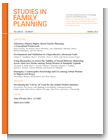

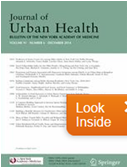




Keywords: Keywords : maternal mortality; cause of death; Africa; Asia; verbal autopsy; INDEPTH Network
Background: Women continue to die in unacceptably large numbers around the world as a result of pregnancy, particularly in sub-Saharan Africa and Asia. Part of the problem is a lack of accurate, population-based information characterising the issues and informing solutions. Population surveillance sites, such as those operated within the INDEPTH Network, have the potential to contribute to bridging the information gaps.
Objective: To describe patterns of pregnancy-related mortality at INDEPTH Network Health and Demographic Surveillance System sites in sub-Saharan Africa and southeast Asia in terms of maternal mortality ratio (MMR) and cause-specific mortality rates.
Design: Data on individual deaths among women of reproductive age (WRA) (15–49) resident in INDEPTH sites were collated into a standardised database using the INDEPTH 2013 population standard, the WHO 2012 verbal autopsy (VA) standard, and the InterVA model for assigning cause of death.
Results: These analyses are based on reports from 14 INDEPTH sites, covering 14,198 deaths among WRA over 2,595,605 person-years observed. MMRs varied between 128 and 461 per 100,000 live births, while maternal mortality rates ranged from 0.11 to 0.74 per 1,000 person-years. Detailed rates per cause are tabulated, including analyses of direct maternal, indirect maternal, and incidental pregnancy-related deaths across the 14 sites.
Conclusions: As expected, these findings confirmed unacceptably high continuing levels of maternal mortality. However, they also demonstrate the effectiveness of INDEPTH sites and of the VA methods applied to arrive at measurements of maternal mortality that are essential for planning effective solutions and monitoring programmatic impacts.
http://dx.doi.org/10.3402/gha.v7.25368

Keywords: Keywords: HIV/AIDS; tuberculosis; Africa; Asia; Mortality; INDEPTH Network; Verbal Autopsy; InterVA
Background: As the HIV/AIDS pandemic has evolved over recent decades, Africa has been the most affected region, even though a large proportion of HIV/AIDS deaths have not been documented at the individual level. Systematic application of verbal autopsy (VA) methods in defined populations provides an opportunity to assess the mortality burden of the pandemic from individual data.
Objective: To present standardised comparisons of HIV/AIDS-related mortality at sites across Africa and Asia, including closely related causes of death such as pulmonary tuberculosis (PTB) and pneumonia.
Design: Deaths related to HIV/AIDS were extracted from individual demographic and VA data from 22 INDEPTH sites across Africa and Asia. VA data were standardised to WHO 2012 standard causes of death assigned using the InterVA-4 model. Between-site comparisons of mortality rates were standardised using the INDEPTH 2013 standard population.
Results: The dataset covered a total of 10,773 deaths attributed to HIV/AIDS, observed over 12,204,043 person-years. HIV/AIDS-related mortality fractions and mortality rates varied widely across Africa and Asia, with highest burdens in eastern and southern Africa, and lowest burdens in Asia. There was evidence of rapidly declining rates at the sites with the heaviest burdens. HIV/AIDS mortality was also strongly related to PTB mortality. On a country basis, there were strong similarities between HIV/AIDS mortality rates at INDEPTH sites and those derived from modelled estimates.
Conclusions: Measuring HIV/AIDS-related mortality continues to be a challenging issue, all the more so as anti-retroviral treatment programmes alleviate mortality risks. The congruence between these results and other estimates adds plausibility to both approaches. These data, covering some of the highest mortality observed during the pandemic, will be an important baseline for understanding the future decline of HIV/AIDS.
http://dx.doi.org/10.3402/gha.v7.25370

Keywords : Keywords: malaria; Africa; Asia; mortality; INDEPTH Network; verbal autopsy; InterVA
Background: Malaria continues to be a major cause of infectious disease mortality in tropical regions. However, deaths from malaria are most often not individually documented, and as a result overall understanding of malaria epidemiology is inadequate. INDEPTH Network members maintain population surveillance in Health and Demographic Surveillance System sites across Africa and Asia, in which individual deaths are followed up with verbal autopsies.
Objective: To present patterns of malaria mortality determined by verbal autopsy from INDEPTH sites across Africa and Asia, comparing these findings with other relevant information on malaria in the same regions.
Design: From a database covering 111,910 deaths over 12,204,043 person-years in 22 sites, in which verbal autopsy data were handled according to the WHO 2012 standard and processed using the InterVA-4 model, over 6,000 deaths were attributed to malaria. The overall period covered was 1992–2012, but two-thirds of the observations related to 2006–2012. These deaths were analysed by site, time period, age group and sex to investigate epidemiological differences in malaria mortality.
Results: Rates of malaria mortality varied by 1:10,000 across the sites, with generally low rates in Asia (one site recording no malaria deaths over 0.5 million person-years) and some of the highest rates in West Africa (Nouna, Burkina Faso: 2.47 per 1,000 person-years). Childhood malaria mortality rates were strongly correlated with Malaria Atlas Project estimates of Plasmodium falciparum parasite rates for the same locations. Adult malaria mortality rates, while lower than corresponding childhood rates, were strongly correlated with childhood rates at the site level.
Conclusions: The wide variations observed in malaria mortality, which were nevertheless consistent with various other estimates, suggest that population-based registration of deaths using verbal autopsy is a useful approach to understanding the details of malaria epidemiology.
http://dx.doi.org/10.3402/gha.v7.25369

Keywords: Keywords: climat, season, variability, water, citie, Ouagadougou, Burkina Faso
Most scientific works on water access in the Sahel region focus on rural areas. Urban areas, in contrast, are widely considered to have sufficient access to water. This conception is based on hidden disparities in urban areas in regards to water supply and accessibility. With the population growth, a lot of informal settlements have indeed emerged in cities across the Sahel. They have no access to running water or any sanitation services. Using data collected in informal settlements in Ouagadougou, Burkina Faso, this paper attempts to address questions on the conditions of access to water for household use, how these conditions change seasonally and how people adapt their behaviors to these changes. The paper finds that public spigots, water pumps and water hawkers are the main sources of water for households in these neighborhoods. During the rainy season, many families collect rain water for household use. All these practices vary according to the household’s characteristics. The ability of the population to adapt to seasonal variability is highlighted by the diversity and changes in the choice of water sources. This choice implies the variability of the distance and the price paid for water. To some extent, during certain times of the year, due to a lack of options, people are forced to pay a high price, to travel long distances to fetch water and / or to limit the amount of water for domestic use.

Keywords: Keywords: Vaccination; Religion; Child; Ouagadougou; Burkina Faso
Many studies have shown a significant relationship between religion and health in Western countries. In developing countries, however, there is a dearth of scientific studies on the matter. Using data from the Ouagadougou Health and Demographic Surveillance System, this paper examines religious differences in child vaccination rates in five districts of Ouagadougou, Burkina Faso. It tests the applicability of the selectivity hypothesis, which holds that religious differences in health come from underlying differences in the socioeconomic and demographic composition of religious communities. In our study population, even when socioeconomic and demographic characteristics are taken into account, an effect of religion on child vaccination rates was observed. This suggests that religious disparities in child vaccination rates are not solely due to the makeup of different religious communities, but also to ideological differences and/or to diffusion effects from interactions within religious groups. The religious differences demonstrated here suggest that a greater emphasis should be put on community-based approaches involving religious leaders when addressing health disparities.
http://dx.doi.org/10.11564/27-2-439
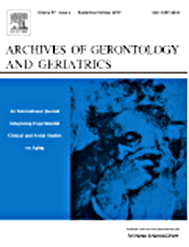
Keywords: Keywords: Cognitive impairment, mobility disability, aging, gender, Ouagadougou, Burkina Faso
This study aims to examine differences in cognitive impairment and mobility disability between older men and women in Ouagadougou, Burkina Faso, and to assess the extent to which these differences could be attributable to gender inequalities in life course social and health conditions. Data were collected on 981 men and women aged 50 and older in a 2010 cross-sectional health survey conducted in the Ouagadougou Health and Demographic Surveillance System. Cognitive impairment was assessed using the Leganés Cognitive Test. Mobility disability was self-reported as having any difficulty walking 400 meters without assistance. We used logistic regression to assess gender differences in cognitive impairment and mobility disability. Prevalence of cognitive impairment was 27.6% in women and 7.7% in men, and mobility disability was present in 51.7% of women and 26.5% of men. The women to men odds ratio (95% confidence interval) for cognitive impairment and mobility disability was 3.52 (1.98-6.28) and 3.79 (2.47-5.85), respectively, after adjusting for the observed life course social and health conditions. The female excess was only partially explained by gender inequalities in nutritional status, marital status and, to a lesser extent, education. Among men and women, age, childhood hunger, lack of education, absence of a partner and being underweight were independent risk factors for cognitive impairment, while age, childhood poor health, food insecurity and being overweight were risk factors for mobility disability. Enhancing nutritional status and education opportunities throughout life span could prevent cognitive impairment and mobility disability and partly reduce the female excess in these disabilities.
http://dx.doi.org/10.1016/j.archger.2013.06.007

Keywords : Keywords : Ouagadougou, Burkina Faso, Self-rated health, Chronic diseases, Functional limitations, Depression, Adults
Background: Although the relationship between self-rated health (SRH) and physical and mental health is well documented in developed countries, very few studies have analyzed this association in the developing world, particularly in Africa. In this study, we examine the associations of SRH with measures of physical and mental health (chronic diseases, functional limitations, and depression) among adults in Ouagadougou, Burkina Faso, and how these associations vary by sex, age, and education level.
Methods: This study was based on 2195 individuals aged 15 years or older who participated in a cross-sectional interviewer-administered health survey conducted in 2010 in areas of the Ouagadougou Health and Demographic Surveillance System. Logistic regression models were used to analyze the associations of poor SRH with chronic diseases, functional limitations, and depression, first in the whole sample and then stratified by sex, age, and education level.
Results: Poor SRH was strongly correlated with chronic diseases and functional limitations, but not with depression, suggesting that in this context, physical health probably makes up most of people’s perceptions of their health status. The effect of functional limitations on poor SRH increased with age, probably because the ability to circumvent or compensate for a disability diminishes with age. The effect of functional limitations was also stronger among the least educated, probably because physical integrity is more important for people who depend on it for their livelihood. In contrast, the effect of chronic diseases appeared to decrease with age. No variation by sex was observed in the associations of SRH with chronic diseases, functional limitations, or depression.
Conclusions: Our findings suggest that different subpopulations delineated by age and education level weight the components of health differently in their self-rated health in Ouagadougou, Burkina Faso. In-depth studies are needed to understand why and how these groups do so.
http://www.pophealthmetrics.com/content/11/1/15
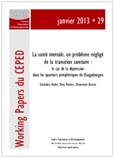
Keywords: Keywords; mentale, dépression, Afrique, pauvreté, santé urbaine
Au niveau mondial, la charge de morbidité due aux troubles mentaux et du comportement est très lourde et parmi ces troubles, la dépression est aujourd’hui la troisième plus importante cause de morbidité et d’incapacité au niveau mondial. Vivant dans un contexte d’urbanisation rapide et de pauvreté, les habitants des quartiers périphériques de la capitale burkinabè suivis par l’Observatoire de Population de Ouagadougou (OPO) sont potentiellement vulnérables face à la dépression. Une étude sur la santé, menée en 2010 auprès d’un échantillon représentatif de cette population (n= 2187), a permis d’estimer que 4,3% des adultes vivaient un épisode dépressif au moment de l’enquête. Les résultats révèlent une forte association entre la dépression et les problèmes de santé physique, notamment les maladies chroniques ou encore les incapacités. Les populations urbaines qui subissent un cumul des maladies transmissibles, non transmissibles et des accidents sont donc particulièrement exposées. L’étude montre aussi une interaction entre dépression et grande pauvreté. Ces travaux démontrent que la santé mentale, qui pèse sur le développement socioéconomique et sanitaire des populations urbaines africaines, devrait être intégrée de manière plus systématique aux programmes de santé publique.
http://www.ceped.org/?La-sante-mentale-un-probleme
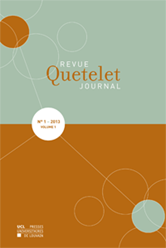
Keywords:Keywords : cognitive deficiency, motor disability, aging, gender, Ouagadougou, Burkina Faso
This study aims to examine differences in cognitive impairment and mobility disability between older men and women in Ouagadougou, Burkina Faso, and to assess the extent to which these differences could be attributable to gender inequalities in life course social and health conditions. Data were collected on 981 men and women aged 50 and older in a 2010 cross-sectional health survey conducted in the Ouagadougou Health and Demographic Surveillance System. Cognitive impairment was assessed using the Leganés Cognitive Test. Mobility disability was self-reported as having any difficulty walking 400 meters without assistance. We used logistic regression to assess gender differences in cognitive impairment and mobility disability. Prevalence of cognitive impairment was 27.6% in women and 7.7% in men, and mobility disability was present in 51.7% of women and 26.5% of men. The women to men odds ratio (95% confidence interval) for cognitive impairment and mobility disability was 3.52 (1.98-6.28) and 3.79 (2.47-5.85), respectively, after adjusting for the observed life course social and health conditions. The female excess was only partially explained by gender inequalities in nutritional status, marital status and, to a lesser extent, education. Among men and women, age, childhood hunger, lack of education, absence of a partner and being underweight were independent risk factors for cognitive impairment, while age, childhood poor health, food insecurity and being overweight were risk factors for mobility disability. Enhancing nutritional status and education opportunities throughout life span could prevent cognitive impairment and mobility disability and partly reduce the female excess in these disabilities.
http://www.uclouvain.be/437999.html

Keywords: Deficience en micronutriments, Facteurs de risques cardiométaboliques, Inflammation, Adultes, Burkina Faso
Increasing evidence suggests that high-sensitivity C-reactive protein (hs-CRP) is associated with cardiometabolic risk factors (CMRF) while being also related to micronutrient deficiencies. As part of a project on the double burden of under- and overnutrition in sub-Saharan Africa, we assessed the relationship between hs-CRP and both CMRF and micronutrient deficiencies in a population-based cross-sectional study carried out in the Northern district of Ouagadougou, the capital city of Burkina Faso. We randomly selected 330 households stratified by income tertile. In each income stratum, 110 individuals aged 25-60 years and having lived in Ouagadougou for at least 6 months were randomly selected, and underwent anthropometric measurements and blood sample collection. The prevalence of high hs-CRP was 39·4 %, with no sex difference. Vitamin A-deficient subjects (12·7 %) exhibited significant risk of elevated hs-CRP (OR 2·5; P= 0·015). Serum ferritin was positively correlated with log hs-CRP (r 0·194; P= 0·002). The risk of elevated hs-CRP was significant in subjects with BMI = 25 kg/m2 (OR 6·9; 95 % CI 3·6, 13·3), abdominal obesity (OR 4·6; 95 % CI 2·2, 7·3) and high body fat (OR 10·2; 95 % CI 5·1, 20·3) (P< 0·001, respectively). Independent predictors of hs-CRP in linear regression models were waist circumference (ß = 0·306; P= 0·018) and serum TAG (ß = 0·158; P= 0·027). In this sub-Saharan population, hs-CRP was consistently associated with adiposity. Assuming that plasma hs-CRP reflects future risk of cardiovascular events, intervention which reduces CRP, or chronic and acute nutrition conditions associated with it, could be effective in preventing their occurrence particularly in sub-Saharan Africa.
http://dx.doi.org/10.1017/S0007114512003182
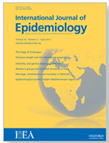
Mots clés: Sub-Saharan Africa , Urban, Slums, Demography, Age Distribution, Censuses, Population Dynamics, Population Growth, Vital Statistics, Mortality, Life Expectancy, Health Status, Health Service Accessibility, Health Inequalities, Poverty, Vulnerability
The Ouagadougou Health and Demographic Surveillance System (Ouaga HDSS), located in five neighbourhoods at the northern periphery of the capital of Burkina Faso, was established in 2008. Data on vital events (births, deaths, unions, migration events) are collected during household visits that have taken place every 10 months. The areas were selected to contrast informal neighbourhoods (40 000 residents) with formal areas (40 000 residents), with the aims of understanding the problems of the urban poor, and testing innovative programmes that promote the well-being of this population. People living in informal areas tend to be marginalized in several ways: they are younger, poorer, less educated, farther from public services and more often migrants. Half of the residents live in the Sanitary District of Kossodo and the other half in the District of Sig-Nonghin. The Ouaga HDSS has been used to study health inequalities, conduct a surveillance of typhoid fever, measure water quality in informal areas, study the link between fertility and school investments,test a non-governmental organization (NGO)-led programme of poverty alleviation and test a community-led targeting of the poor eligible for benefits in the urban context. Key informants help maintain a good rapport with the community. The Ouaga HDSS data are available to researchers under certain conditions.
http://dx.doi.org/10.1093/ije/dys090
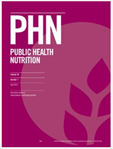
Keywords: Nutritional deficiencies, Non-communicable disease, Double burden of malnutrition, Adults, Burkina Faso
To document the double burden of malnutrition and cardiometabolic risk factors (CMRF) in adults and its occurrence according to different sociodemographic parameters. Population-based cross-sectional observational study. We first randomly selected 330 households stratified by tertile of the income levels proxy as low, middle and high income. Northern district of Ouagadougou, the capital city of Burkina Faso. In each income stratum, 110 individuals aged 25–60 years and who had lived permanently in Ouagadougou for at least 6 months were randomly selected, followed with collection of anthropometric, socio-economic and clinical data, and blood samples. The overall obesity/overweight prevalence was 24·2 % and it was twice as high in women as in men (34·1 % v. 15·5 %, P < 0·001). Hypertension, hyperglycaemia and low HDL cholesterol prevalence was 21·9 %, 22·3 % and 30·0 %, respectively, without gender difference. The prevalence of the metabolic syndrome was 10·3 %. Iron depletion and vitamin A deficiency affected 15·7 % and 25·7 % of participants, respectively, with higher rates in women. Coexistence of at least one nutritional deficiency and one CMRF was observed in 23·5 % of participants, and this ‘double burden’ was significantly higher in women than in men (30·4 % v. 16·1 %, P = 0·008) and in the low income group. CMRF are becoming a leading nutritional problem in adults of Ouagadougou, while nutritional deficiencies persist. The double nutritional burden exacerbates health inequities and calls for action addressing both malnutrition and nutrition-related chronic diseases.
http://dx.doi.org/10.1017/S1368980012000729
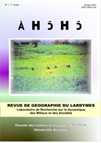
Keywords: black-market medicines, illicit medicines, living conditions, education level, Ouagadougou
While the distribution of essential generic drugs in Burkina Faso has improved since the early 1990s, we are seeing an increase in the number of drugs sold illicitly, outside of the formal pharmacy network. Authorities are fighting the importation of these products, whose origins are often unknown and which can be of questionable quality. Faced with the difficulty of this task, efforts seemed to have turned to educating consumers. This study attempts to better understand consumers by contrasting economic power and cultural factors, particularly level of education. It uses a survey conducted in five districts in Ouagadougou. Contrary to popular belief, results how that the use of illicit medicines is more a matter of education than of living conditions. The study suggests that strengthening, if not redesigning, health education to help people with low levels of education. An approach based on community mobilization would be even more beneficial.
http://lodel.tg.refer.org/ahoho/index.php?/presentation/a-propos-de-la-revue/172-comite-scientifique
